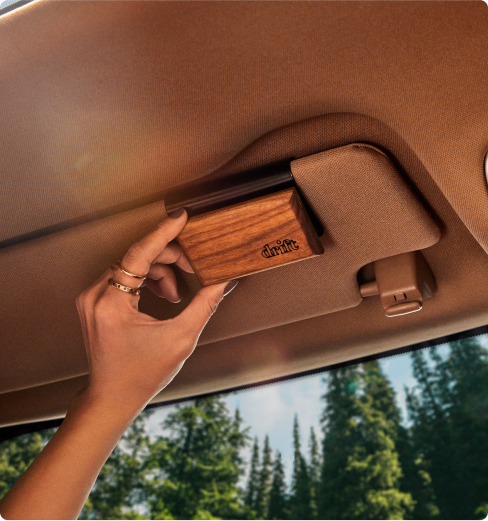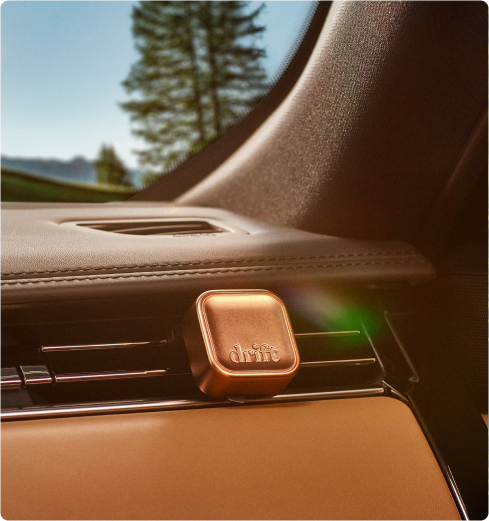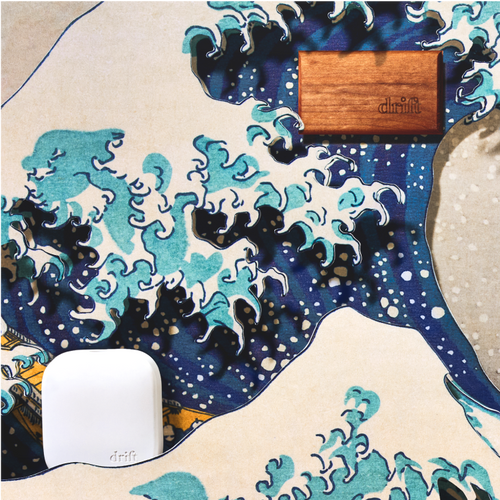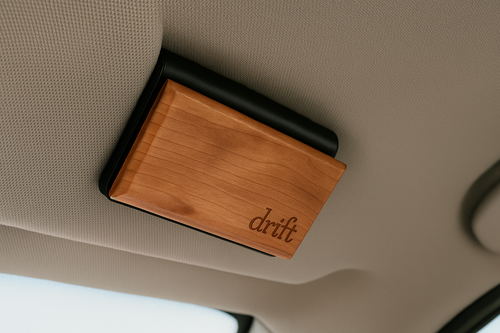
How to Craft a Sophisticated Car Perfume For Your Vehicle
by David Pascu | 10/24/2024
Crafting a custom car perfume can help you create a personalized ambiance in your vehicle. Yet knowing which elements to include in your perfume and which blend of essential or fragrance oils will achieve the scent you desire can require years of experience (and many pungent, noxious concoctions that can leave a lasting impression). If you’d rather skip ahead to the best parts — mainly, the sophisticated car scent that expresses your personality — Drift’s premium car perfumes do all the work so you can enjoy only the benefits.
The art of creating perfumes has come and gone throughout history. Explore the basic perfume-making process to discover just how much knowledge is required to fuse scents successfully. Finally, select from Drift’s artisan car fresheners to infuse your vehicle with expertly crafted signature scents.
Types of Perfume
To say perfumes are purely cosmetic is to ignore the art form behind the scenes, one not many are privy to. Incorporating the essence of various natural materials requires a deft hand and a particularly discerning sense of smell. Labeling the process challenging grossly understates the effort involved.
The process of creating a personal perfume begins with choosing a base: alcohol or oil. Let’s delve further into the advantages and disadvantages of each before moving on to building the body of the perfume — arguably, the most important part.
Alcohol-Based
Perfumists use alcohol as a base for several reasons, but first, a clarification. The alcohol used in perfumes isn’t the same as what’s poured in bars nationwide. Instead, it’s a perfumer’s alcohol that helps deliver scents to the skin, evaporates quickly, and prevents microbial growth. You no more recognize its presence than you would the tray upon which your food arrives at your table.
Alcohol-based perfumes are also classified based on potency. Which of these classifications have you come across before?
Note that each of these classifications only applies to alcohol-based perfumes. Those based on oil are classified differently based on the chosen carrier oil.
Oil-Based
Perfumes that incorporate essential or fragrance oils typically take a carrier oil as their base. Common carrier oils include almond oil, coconut oil, and jojoba oil. These carrier oils are necessary to dilute the essential or fragrance oils so they’re safe for topical application.
In fact, many prefer an oil-based perfume over an alcohol-based variant because it’s softer on sensitive skin. The oils typically moisturize skin rather than dry it out as alcohol does when it evaporates. Oil-based perfumes tend to last longer as well, although they don’t release fragrance notes into the air as well as alcohol does. All this means is that anyone who wants to experience your personal scent must enter your intimate space to do so.
The difference in value between fragrance oil-based and essential oil-based perfumes is night and day, at least once you understand their origins. Fragrance oils are produced within a lab and present a cost-effective solution. However, essential oils require natural ingredients and tap into aromatherapy properties, so they’re often preferred over fragrance oils.
Car Perfume: Three Parts
Now that you have the foundation for the perfect perfume, it’s time to start building the body. A Frenchman once decided that scents should be referred to in his Piesse Scale, but we tend to think of scents in a more simplistic view these days. We categorize them as top, middle, and bottom notes, and a well-balanced perfume takes advantage of all three.
Top
To earn the name “top” note, scents are typically light and fresh. The following top notes are often the first scent you’re introduced to in a perfume, such as:
- Anise
- Bergamot
- Eucalyptus
- Grapefruit
- Lemon
- Lime
- Mandarin
- Peppermint
- Petitgrain
- Spearmint
- Sweet orange
Did any of these scents inspire you?
Middle
Middle notes comprise the main perfume body, second in line but perhaps not second-best. Potential candidates include the following:
- Angelica
- Bay
- Black pepper
- Cardamom
- Chamomile
- Clary sage
- Cypress
- Geranium
- Lavender
- Lemon balm
- Neroli
- Palmarosa
- Pine
- Rose
- Rosemary
Which pairings of top and middle notes do you prefer?
Bottom
The base notes provide the top and middle notes with a foundation that can be subtle yet rich, lingering yet tantalizing. Here are a few examples:
- Benzion
- Carrot seed
- Cedarwood
- Frankincense
- Jasmine
- Myrrh
- Patchouli
- Sandalwood
- Vanilla
- Violet
- Ylang-ylang
Pair a note from the top, middle, and bottom perfume parts to craft your favorite car perfume. If all this sounds more like a complex equation, then take our Scent Quiz to simplify your choices and find a Drift premium car scent perfect for your vehicle.
Drift Signature and Stylish Car Perfumes
Mastering the technique of crafting the perfect car perfume has been our focus from the beginning. You’ll never find phthalates, parabens, mineral oils, DEA, formaldehyde, petroleum, propylene, dichlorobenzene, and other harsh chemicals in our car fresheners. Instead, we use sustainably sourced materials, like organic stone for our Stone car freshener, alder wood for our Wood car freshener, and alloy metal for our Metal car freshener. Our car perfumes are also vegan, cruelty-free, and pet-friendly.
Discover Your Next Favorite Car Perfume With Drift
Drift car fresheners take your aromatic experience in your vehicle to the next level. Join our Scent of the Month Club to explore new car perfumes and select your favorites, or refer a friend to get a free refill. Which Drift car perfume will you choose?






